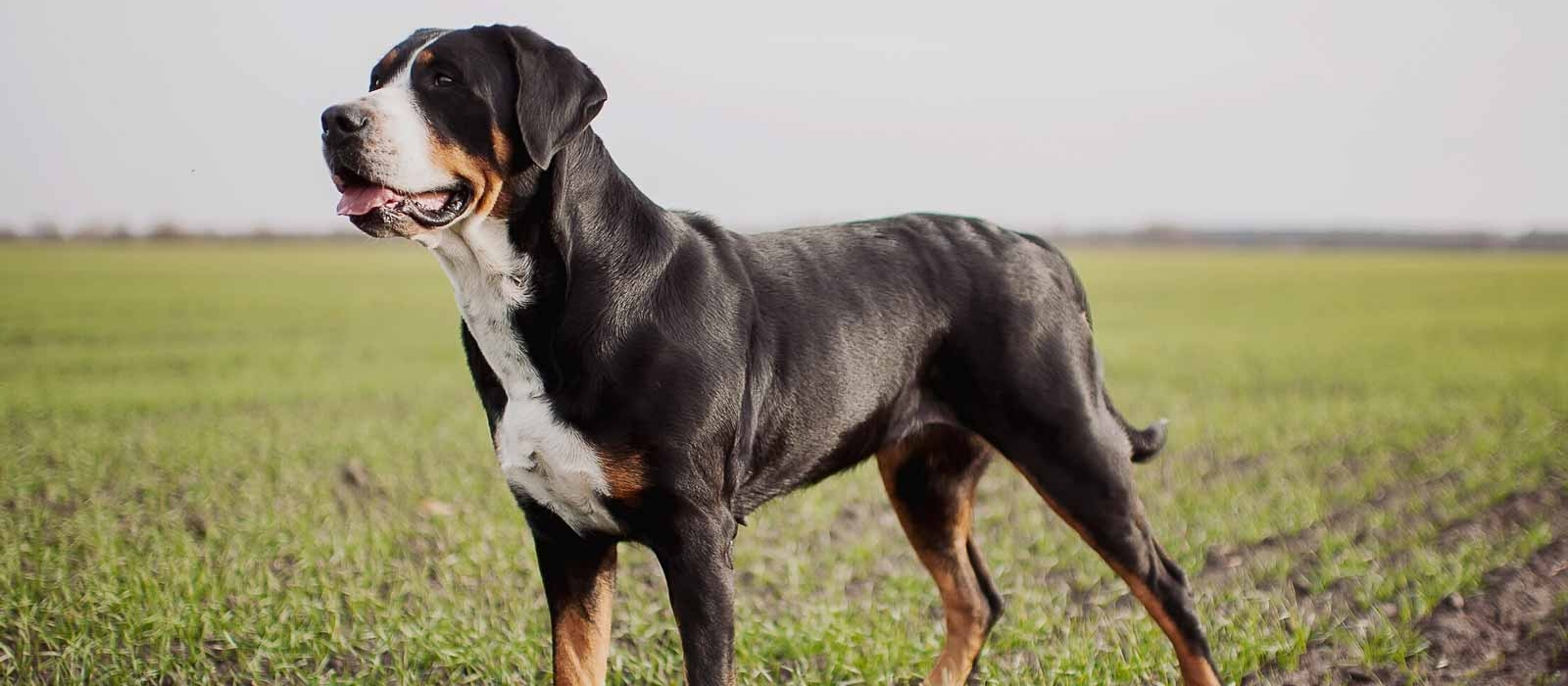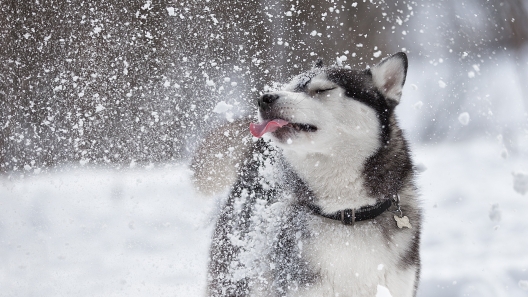-
Activity Level:
high
-
Shedding Level:
moderate
-
Grooming Level:
low
-
Trainability:
moderate
-
Good for Novice Owners:
moderate
-
Adaptability:
moderate
-
Kid/Pet Friendly:
often
-
Prey Drive:
moderate
-
Watchdog:
very alert
- Average Size: Giant
- Average Lifespan: 8-11 years
- Registered?: aca, akc
Greater Swiss Mountain Dog Dog Breed Information
Overview
Temperament
Adaptability
Health
Owner Experience
Grooming
Activity Level
Size
Life Span
Did You Know?
The Greater Swiss Mountain Dog, also referred to as a GSMD or a Swissy, originated in the Swiss Alps. There are several theories surrounding the origin of this breed. The most popular theory posits that they are descendants of the Molosser, which is a large, ancient mastiff-type of dog. The Molosser was a popular war dog for ancient armies and it’s theorized that they were brought into the Alps more than 2,000 years ago when the Roman Legions invaded. These ancient dogs mated with indigenous dogs to make several dog breeds, including the one we now refer to as the Greater Swiss Mountain Dog. They are also closely related to the Bernese Mountain Dog.
GSMDs were used primarily as farm and pasture dogs and guard dogs. Greater Swiss Mountain Dogs, or Swissies, functioned as all-purpose farmhands for Swiss dairymen and herders. They were also commonly used to pull carts full of meat and dairy to the market. The breed fell out of popularity as its work was taken on by machines and other breeds, but it experienced a surge in popularity in the early 1900s when it was rediscovered. The breed was first recognized internationally in 1939 and was brought to the United States for the first time in 1968. The American Kennel Club fully recognized the Greater Swiss Mountain Dog in 1995 as part of the Working Group.
Greater Swiss Mountain Dogs are known for their faithful, loyal, and dependable nature. These hard-working dogs are large, strong, and agile. They are also family-oriented and get along well with children, other dogs, other pets, and non-threatening strangers. Swissies are alert, focused, and have a natural instinct to protect, which makes them excellent watchdogs and guard dogs. They are friendly with non-threatening strangers, but will take a confident, protective, and intimidating stance if faced with a threat.
This dog breed is moderately adaptable. They are a large dog breed that needs plenty of room and plenty of exercise to be happy and healthy. As such, they do not tend to be a good fit for apartments. They crave attention and physical contact, which means they do not like to be left alone for long periods of time. Greater Swiss Mountain Dogs do well in just about any climate, but they can be sensitive to heat.
Swissies are a relatively healthy dog breed, especially for their size. A few breed-specific issues to be aware of include epilepsy, urinary incontinence, entropion, and distichiasis. Although they do not have many breed-specific issues, they can have health problems common to large-breed dogs like hip dysplasia, elbow dysplasia, and bloat.
The Greater Swiss Mountain Dog is moderately trainable. Although they are highly intelligent, eager to please, and are quick learners, they can be stubborn and determined. That, paired with their size, makes them a good fit for more experienced dog owners. Swissies can be difficult to housebreak, so crate training and plenty of patience is a must. It’s important for you to build trust with your Swissy and keep their training steady and reliable. They tend to be quite boisterous when they are young, but consistent and ongoing training focused on positive rewards and praise will help your GSMD learn manners and physical self-control.
Greater Swiss Mountain Dogs have a low grooming level. They have a short, straight coat that requires occasional brushing and bathing for most of the year. They have a double coat, so they will go through a seasonal shedding session twice a year. During these times, they’ll benefit from more frequent brushing.
Although their coat is low-maintenance, there are other grooming tasks that are important for all dogs. Their nails need to be trimmed regularly to keep them from growing too long and hindering movement. Usually, monthly nail trimming is sufficient, but you may need to trim more often if the nails aren’t being worn down as much between trimmings. If you hear their nails clicking on the floor, it’s time for another trim. Dropdown ears, or floppy ears, tend to trap dirt, debris, and moisture more than pointy ears, which makes them more prone to ear infections. So, it’s important to check your dog’s ears regularly and carefully clean them as needed.
Dental care is so important for dogs, but it is also often overlooked, which is why dental disease is one of the most common health issues in dogs. Proper dental care for dogs can help prevent the tartar buildup that causes tooth decay and gum disease. Brushing your dog’s teeth or using an enzyme toothpaste at least a few times a week, if not every day, is ideal for helping to prevent dental disease. You can also supplement your efforts with a dental care diet and dental hygiene chews.
Getting your Swissy used to having their paws, mouth, and ears handled as a puppy is a good idea as it helps makes grooming easier for both of you, especially once your puppy is a full-sized dog.
Swissies are working dogs, so they will require plenty of exercise and a job to do in order to stay happy and healthy. Aside from the walks they need, their activity level will be variable and will often match the activity level of their family. They can have short bursts of activity followed by a nap or can enjoy more athletic activities like hiking or backpacking with their owners.
They are also a good fit for dog sports like herding, carting, weight pulling, and obedience trials. GSMDs enjoy practically any activity that allows them to be with their family. It is important to take it relatively easy and low-impact for the first 2-3 years of their life as they mature slowly and their bones, joints, and muscles will still be developing until that point.
A fully-grown Greater Swiss Mountain Dog usually stands 24-28 inches tall at the shoulder and weighs between 110 and 150 pounds.
A Greater Swiss Mountain Dog generally lives 8-11 years.
The Swiss Army used the Greater Swiss Mountain Dog as a draft dog during World War II.









